 You know the signs, a few gray hairs here and there, little wrinkles around your mouth that you insist are smile lines or the twinge you feel when get up from the couch…It’s happening to all of us. We’re getting older. While these are familiar symptoms of aging we try to ignore, some of us may experience other changes that shouldn’t be ignored. If you notice that your legs are sore when you lay down at night, but feel better when you hang them over the edge of bed, if your feet ache, burn or feel cold, especially at night or if you have pain in both of your calves, hips or thighs when you exercise or rest, you may have peripheral vascular disease (PVD).
You know the signs, a few gray hairs here and there, little wrinkles around your mouth that you insist are smile lines or the twinge you feel when get up from the couch…It’s happening to all of us. We’re getting older. While these are familiar symptoms of aging we try to ignore, some of us may experience other changes that shouldn’t be ignored. If you notice that your legs are sore when you lay down at night, but feel better when you hang them over the edge of bed, if your feet ache, burn or feel cold, especially at night or if you have pain in both of your calves, hips or thighs when you exercise or rest, you may have peripheral vascular disease (PVD).
Peripheral vascular disease is a broad term that refers to disease in your veins, arteries and lymphatic vessels in your arms and legs. Typically, PVD mostly affects your legs. Peripheral Arterial Disease (PAD), a form of PVD, refers specifically to the type of PVD that is caused by the buildup of fatty material inside the arteries. This build-up occurs gradually over time and hardens into plaque inside the artery, this condition is known as atherosclerosis. Sometimes, it’s called “hardening of the arteries”. No matter what you call it, this plaque causes a narrowing of the passageway, restricting the amount of blood that flows throughout the body. It most often occurs in the lower legs, feet and toes. Without an adequate blood supply, your body can’t get the oxygen and nutrients it needs to maintain healthy legs, feet and/or toes.
Chronic venous insufficiency (CVI) refers specifically to disease of the veins and is generally caused by heredity, weight gain, pregnancy, hormone changes or sedentary lifestyle. It refers to the body’s ability to return blood back to the heart during circulation; what often happens is the body sends the necessary blood supply to the extremities but can’t return the blood back into the body’s circulation. CVI can result in the development of bulging vein problems, chronic venous ulcers (wounds that have a difficult time healing or won’t heal) , spontaneous rupture of varicose veins (which creates a bruise or an opening that won’t stop bleeding) , spider veins, leg swelling and inflammatory/chronic skin changes including darkening of the skin around the lower leg, ankles and feet.
Whatever type of PVD you have, whether it’s venous or arterial, the primary goal is to treat the condition before you experience damage to the vascular system that cannot be repaired. Symptoms from either PAD or CVI are a warning that there is a medical condition that needs to be addressed sooner rather than later. Both forms of the disease worsen over time unless you do something about it. Fortunately, significant lifestyle changes, proper treatment, or a combination of the two, are usually quite successful.
Signs You Need Treatment for Peripheral Vascular Disease
People living with PVD often don’t realize how much the disease affects their daily activities and quality of life. You don’t want to dismiss the symptoms of PVD as signs of aging. It’s important to pay attention to the subtle signs of this condition. Most people experience the feeling of dull, cramping pain while others may experience a heaviness or tightness in their leg muscles and general leg fatigue.
Although symptoms related to PVD are not usually life threatening, they can contribute to a sedentary lifestyle. This may cause weight gain and in extreme cases may require surgical intervention or lead to loss of limb. Without appropriate treatment, symptoms and the disease can worsen and lead to serious conditions like critical limb ischemia and deep vein thrombosis (DVT). This puts you at higher risk for stroke and pulmonary embolism. Getting an accurate diagnosis and a proper treatment plan is critical.
What Kind of Doctor Treats Peripheral Vascular Disease?
Interventional radiologists and interventional cardiologists are specially trained to diagnose and treat PVD. Our team at CiC uses image-guided techniques to make a proper diagnosis based on your unique symptoms. From that diagnosis, they treat your condition with minimally-invasive or non-invasive procedures. What does this mean to you? It means less risk, less pain, less recovery time and better health outcomes as compared to traditional surgery. You don’t have to live with symptoms related to PVD.
Our CiC team includes venous specialists Dr. Karen Garby and Dr. James McEown, along with arterial specialists Dr. David Lopresti and Dr. David Switzer. To learn more about venous or arterial treatment call Comprehensive Interventional Care Centers at 888-377-7122 or visit us on line at www.ciccenters.com to find a specialist near you. We offer leading edge prevention, diagnosis and intervention for varicose vein treatment and peripheral arterial disease.
